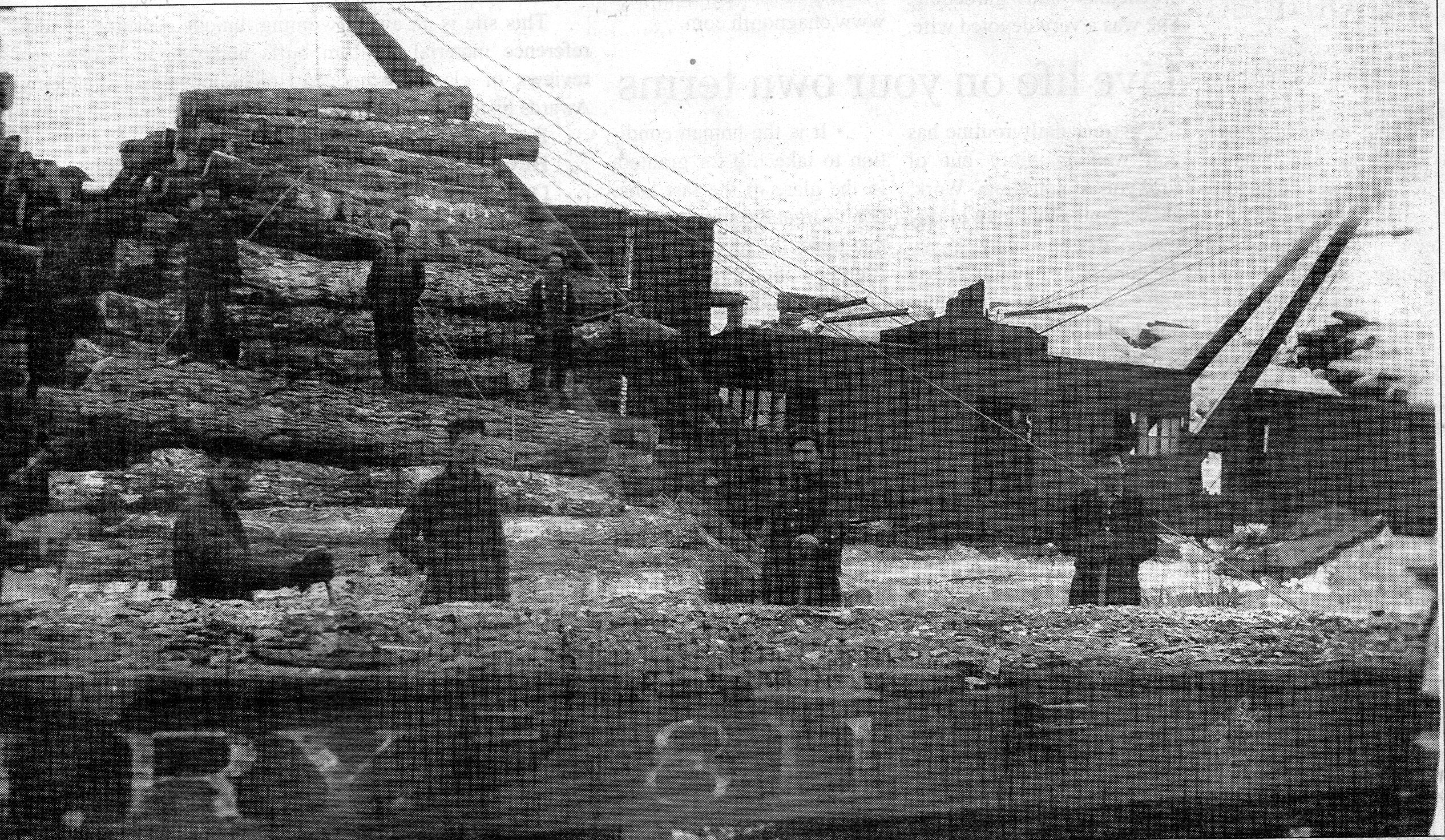
Submitted by Nute Chapman
From Onaway Outlook April 26, 2013

 |
Submitted by Nute Chapman From Onaway Outlook April 26, 2013 |
 |
CAPTION #1: THE BIG WHEELS that sat at the turnaround were used as the background for many photos. This
set of big wheels was part of Onaway's History. So sad that they went by the wayside. They were called a
"Sliptongue Skidder," and were used before the steam skidder.
 CAPTION #2: A SKIDDER-LOADER at the decking site. The men in this picture are unknown.
CAPTION #2: A SKIDDER-LOADER at the decking site. The men in this picture are unknown.
 Scalded to death
Scalded to death
The Alpena News, Wednesday, January 1, 1908
Henry Prevost, an employee of the Lobdell & Churchill Company, while loading cars near Onaway, Friday
December 27, 1907, met with a horrible death.
He was assisting in loading logs onto a flat car, and in some way the steam loader overturned and he
was crushed beneath it. Before he could be rescued, he was scalded so with the escaping steam that he
lived but a few minutes afterwards. Henry Prevost was 28 years of age, and leaves a widow, his parents
of Wilson Township and several brothers and sisters.
The remains were brought to Alpena, and were taken to the Williams Morgue. The funeral was held from the
Methodist Church in King Settlement at 11:00 Sunday morning, the Rev. Henry officiating.
***********
Card of Thanks: I desire to extend my sincere and heartfelt thanks to those friends, and neighbors, who
were so kind at the time of the death and burial of my beloved husband, especially the members of the
Royal Lodge and the men at Camp 12. Mrs. Henry Prevost.
***********
Steam skidders had many names and uses. The early mechanical skidders were steam-powered. They
traveled on railroads known as "Dummylines." They were sometimes called "Steam Donkeys." They
appeared to be large and cumbersome but were the true workhorses of their day. One of these skidders
called the Clyde was capable of retrieving logs from four different points at the same time. Each cable,
or lead, was approximately 1,000 feet in length. Once the logs were attached and a clearance signal was
sent for retrieval, they could be skidded at a speed of 1,000 feet per minute. Working conditions around
these machines were very dangerous. Some of the larger skidders like the "Lidgerwood", skidded logs
to the landing and also loaded the logs onto the rail cars, making them a skidder and loader.
-From The Onaway Outlook, April 26, 2013, p. 3.
Retyped by J. Anderson.